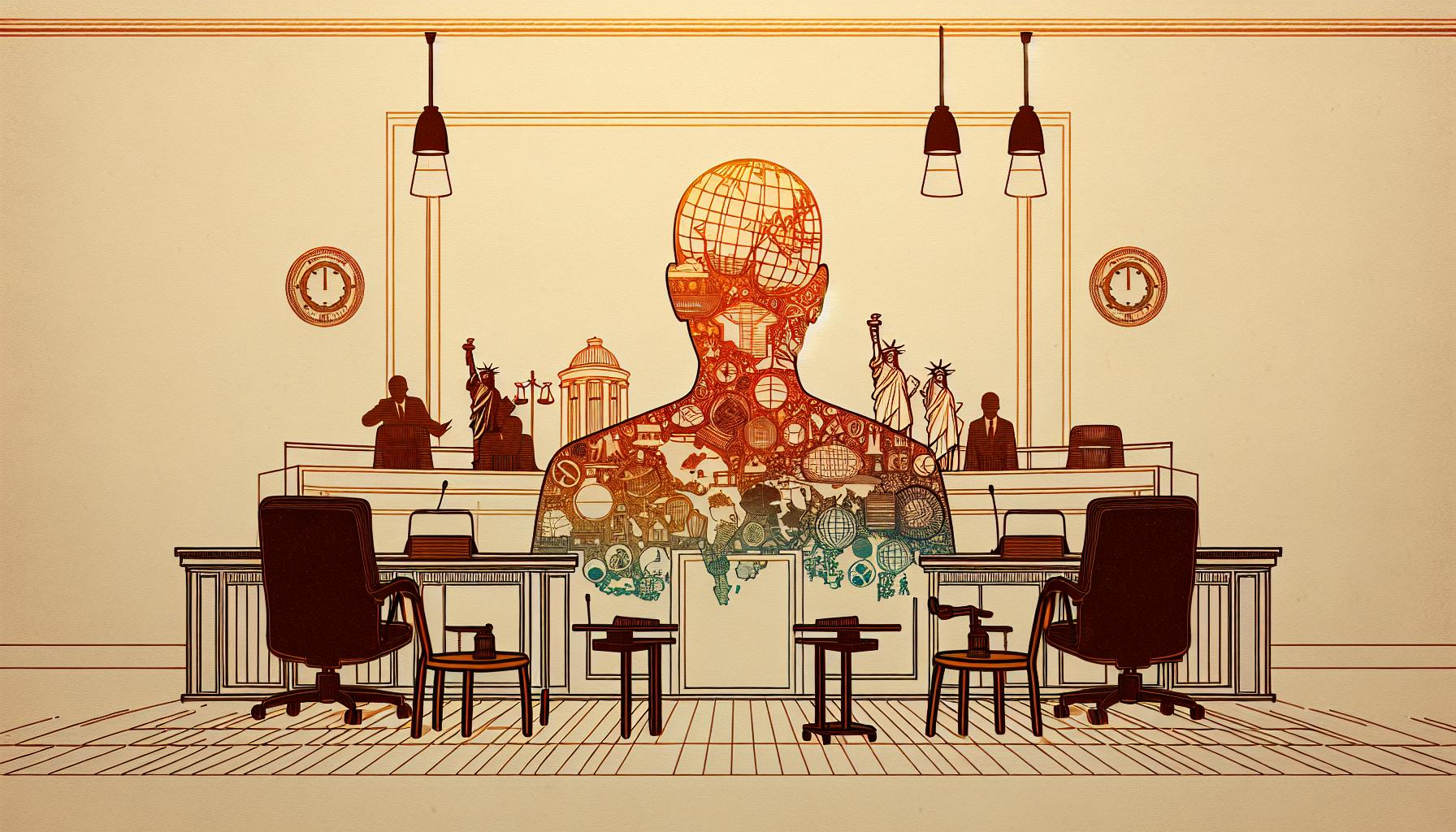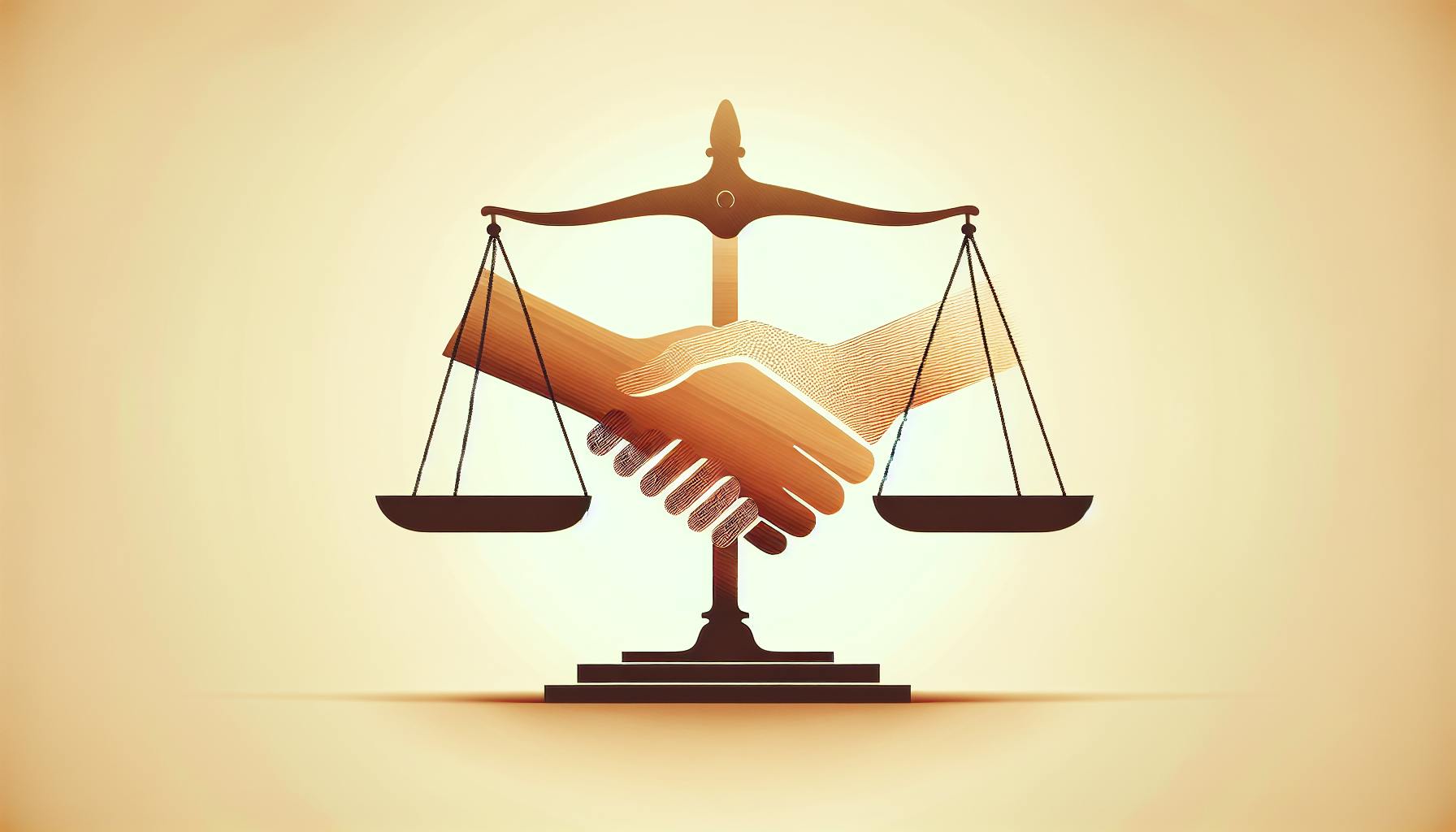Attempting to take a life is undoubtedly a serious matter that warrants thoughtful examination.
In this article, we will explore the complex factors surrounding the trial of John Hinckley Jr. to better understand the context and legacy of this pivotal case in history.
By reviewing the background, key events, trial proceedings, and aftermath from an impartial perspective, we may gain insight into difficult issues of criminal responsibility, mental health, security challenges, and public perceptions of justice.
Introduction to the Reagan Assassination Attempt by John Hinckley Jr.
On March 30, 1981, John Hinckley Jr. attempted to assassinate President Ronald Reagan outside the Hilton Hotel in Washington D.C. Hinckley fired six shots from a .22 caliber revolver, wounding Reagan and three others - White House Press Secretary James Brady, Secret Service agent Timothy McCarthy, and Washington police officer Thomas Delahanty.
Hinckley had become obsessed with actress Jodie Foster and carried out the attack to gain her attention. His mental health history showed signs of instability and suicidal tendencies. While found not guilty by reason of insanity, the assassination attempt led to stricter federal and state controls on the use of the insanity defense.
John Hinckley Jr.'s Troubled Past and Path to Violence
John Hinckley Jr. struggled with depression and isolation through much of his youth. Despite coming from a wealthy family, he had difficulty keeping jobs and was prone to obsession over famous women. His mental health deteriorated in the late 1970s, leading to a suicide attempt in 1980.
Hinckley began stalking President Jimmy Carter and later Ronald Reagan. He became fixated on the film Taxi Driver and its star Jodie Foster, imagining he could impress her by assassinating the President. This dangerous infatuation drove Hinckley closer to the breaking point.
The Infatuation with Jodie Foster and Its Role in the Assassination Attempt
John Hinckley Jr. developed an obsessive infatuation with actress Jodie Foster after seeing her in the 1976 film Taxi Driver. Just as the film's main character plots to assassinate a presidential candidate to win a woman's attention, Hinckley began to follow the same twisted logic.
Hinckley wrote numerous letters to Foster without response. He came to believe that assassinating President Reagan would finally make the actress notice him. This dangerous delusion was a major factor in Hinckley's decision to attack Reagan in March 1981.
The Fateful Day at the Hilton Hotel: Reagan's Brush with Death
On March 30, 1981, John Hinckley Jr. waited outside the Hilton Hotel in Washington D.C. where President Reagan had just given a speech. As Reagan walked to his limousine, Hinckley opened fire - hitting the President, White House Press Secretary James Brady, Secret Service agent Timothy McCarthy, and Washington police officer Thomas Delahanty.
Chaos ensued as the Secret Service rushed to subdue Hinckley and evacuate the President. Reagan was struck by a bullet that ricocheted off the limousine, narrowly missing his heart. Quick reactions by the Secret Service and medical staff saved Reagan's life, but left Press Secretary Brady permanently disabled.
Victims of the Attempt: James Brady, Thomas Delahanty, and Tim McCarthy
The most seriously injured victim was White House Press Secretary James Brady. Shot in the head, Brady was left partially paralyzed and wheelchair-bound. He later became a prominent gun control advocate before passing away in 2014.
Officer Thomas Delahanty was struck by a bullet to his neck, suffering nerve damage to his left arm. Agent Timothy McCarthy took a bullet to his chest but made a full recovery. All were caught in the crossfire of Hinckley’s attack on President Reagan.
The Weapon of Choice: The Röhm RG-14 .22 Caliber Revolver
John Hinckley Jr. used an RG-14 .22 caliber six-shot double action revolver manufactured by Röhm Gesellschaft. Weighing 22 ounces and measuring 9 inches long, the small handgun allowed Hinckley to evade detection as he waited to ambush President Reagan.
The .22 bullets lack stopping power but can still be lethal at close range. Hinckley fired all six shots in 1.7 seconds. While small, the RG-14 was accurate enough for Hinckley’s deadly purpose - an assassination attempt that nearly changed the course of history.
What reason did John Hinckley give for his attempted assassination of President Reagan?
On March 30, 1981, John Hinckley Jr. attempted to assassinate President Ronald Reagan outside the Hilton Hotel in Washington D.C. Hinckley fired six shots from his Röhm RG-14 .22 caliber revolver, wounding Reagan, White House Press Secretary James Brady, Secret Service agent Timothy McCarthy, and Washington police officer Thomas Delahanty.
Hinckley later explained that his motivation for the assassination attempt was to impress actress Jodie Foster, with whom he had developed an obsession after seeing her in the 1976 film Taxi Driver. In a letter found after the shooting, Hinckley wrote that he hoped the attack would gain Foster's attention and love. This bizarre motivation highlighted Hinckley's deteriorating mental health and disconnect from reality.
Hinckley was ultimately found not guilty by reason of insanity. His trial set a precedent regarding the use of psychiatric testimony to establish legal insanity. The verdict also led to the passage of the Insanity Defense Reform Act in 1984, which altered the standards for the insanity defense in federal criminal trials. After the trial, Hinckley was institutionalized at St. Elizabeths Hospital in Washington D.C.
Which president survived an assassination attempt 69 days into his term?
On March 30, 1981, President Ronald Reagan was leaving the Washington Hilton Hotel after giving a speech when John Hinckley Jr. fired six shots from a .22 caliber revolver, hitting Reagan and three others.
Hinckley was attempting to assassinate Reagan in order to impress actress Jodie Foster. He had become obsessed with Foster after seeing her in the 1976 film Taxi Driver.
The first shot hit White House Press Secretary James Brady in the head. The second shot hit police officer Thomas Delahanty. The third overshot Reagan and hit Secret Service agent Timothy McCarthy in the chest. The fourth shot hit Reagan's limousine. The fifth shot hit a building window. The sixth shot ricocheted off the armored side of the limousine and entered Reagan's left underarm, lodging in his lung and stopping just an inch from his heart.
Reagan was rushed to George Washington University Hospital where he underwent emergency surgery. He made a full recovery and was released from the hospital 12 days later. His presidency continued for the remaining 7 years of his term.
Hinckley was arrested at the scene and later found not guilty by reason of insanity. This verdict led to the passage of the Insanity Defense Reform Act in 1984, which altered the rules for pursuing the insanity defense in federal criminal trials.
Where is John Hinckley today?
After being found not guilty by reason of insanity for his assassination attempt on President Ronald Reagan in 1981, John Hinckley Jr. spent over 30 years at St. Elizabeths Hospital in Washington D.C. He was released from institutional psychiatric care in 2016 under strict conditions.
Nowadays, Hinckley lives in an apartment with his 7-year-old cat Theo, who he rescued from the Heritage Humane Society. After devoting her life to looking after him, his mother, Jo Ann Hinckley, died in 2021 at the age of 95, and Hinckley no longer lives in the home he shared with her in Kingsmill.
Hinckley must adhere to a long list of restrictions as part of his release, including limited internet access on approved devices that are monitored. He cannot contact Jodie Foster or any of the victims or their families. Hinckley must also attend mandated individual and group therapy sessions. Despite the severe limitations on his freedom, Hinckley says he feels optimistic about his future.
sbb-itb-e93bf99
sbb-itb-e93bf99
sbb-itb-e93bf99
How many times did John Hinckley shoot Reagan?
John Hinckley Jr. fired a total of six shots from his .22 caliber revolver in the assassination attempt on President Ronald Reagan. The shooting occurred in under two seconds as Reagan was leaving the Washington Hilton Hotel after giving a speech.
Hinckley was waiting in the crowd of people outside the hotel and took aim at Reagan as he walked out. He rapidly fired all six rounds from his gun, but only one of the bullets struck Reagan. The other five shots missed Reagan and hit three other people - White House Press Secretary James Brady, Secret Service agent Timothy McCarthy, and Washington police officer Thomas Delahanty.
Brady suffered the most serious injuries, taking a bullet to the head that left him partially paralyzed. McCarthy and Delahanty both recovered from their non-life-threatening gunshot wounds. After being shot, Reagan was rushed to the hospital and made a full recovery following surgery.
Hinckley's assassination attempt was motivated by his obsession with actress Jodie Foster. He had grown infatuated with her after seeing her in the film Taxi Driver and plotted to gain her attention by assassinating the president. His attorneys would later successfully argue that he was insane at the time of the shooting.
The Trial of John Hinckley Jr. and the Insanity Defense
John Hinckley Jr.'s trial for the attempted assassination of President Ronald Reagan in 1981 brought intense scrutiny on the use of the insanity defense in the legal system. Hinckley's defense team crafted a strategy centered around proving their client was mentally ill and thus not criminally responsible for his actions. However, they faced challenges in convincing a skeptical public and jury.
Crafting the Insanity Defense: Strategy and Challenges
Hinckley's defense team, led by attorney Vincent Fuller, aimed to prove their client was suffering from acute psychosis and depression at the time of the assassination attempt. They would need to demonstrate Hinckley was unable to understand the wrongfulness of his actions or conform his conduct to the law.
Building an insanity defense required obtaining Hinckley's psychiatric records and finding experts to testify to his state of mind. However, public perception that the insanity defense was a legal loophole made their task difficult. The defense needed to carefully select witnesses and evidence to counter this skepticism.
Psychiatric Testimony: The Battle of Expert Witnesses
The trial featured conflicting testimony from psychiatrists on both sides regarding Hinckley's mental state. The defense called witness Dr. William Carpenter Jr., who testified Hinckley had schizophrenia and was insane when he shot Reagan.
Prosecutors brought in their own experts, like Dr. Park Dietz, to argue Hinckley did not meet the legal standard for insanity. The "battle of the experts" left the jury to decide which side to believe.
Public Outcry and the Jury's Controversial Verdict
Many were outraged when the jury delivered a verdict of not guilty by reason of insanity for Hinckley's crimes. The public felt the verdict set a dangerous precedent and that Hinckley had escaped true justice.
However, the jury believed the defense proved Hinckley did not understand his actions were wrong. They felt he needed treatment, not prison. The verdict was controversial but followed the legal standards for an insanity ruling at the time.
The Aftermath of the Verdict: Institutionalization at St. Elizabeths Hospital
Following his acquittal, Hinckley was committed to St. Elizabeths Hospital in Washington D.C., a psychiatric facility. Doctors testified at a hearing that Hinckley continued to pose a danger to himself and others.
Hinckley remains at St. Elizabeths to this day. Though he has earned more privileges recently, he is still closely monitored and must meet certain conditions for release.
Legislative Response: The Insanity Defense Reform Act
The Hinckley verdict led to the Insanity Defense Reform Act of 1984, which altered the federal standard. The act made successfully pleading insanity more difficult, placed the burden on the defense to prove a defendant's insanity, and required periodic assessments of those found not guilty by reason of insanity.
The trial of John Hinckley Jr. brought lasting changes to the insanity defense and public policy regarding mental health and the law. The controversial use of the defense in this case continues to spur debate decades later.
Legacy of the Reagan Assassination Attempt and Hinckley's Trial
The assassination attempt on President Reagan and the subsequent trial of John Hinckley Jr. had significant and long-lasting impacts on various aspects of American society.
The Evolution of Presidential Security: Secret Service Reforms
The Secret Service instituted major reforms after failing to protect Reagan from Hinckley. Protective measures around the president were expanded extensively, including:
- Strengthened physical barriers during public appearances
- Tighter screening of event attendees and press corps
- More extensive use of metal detectors and surveillance equipment
- Expanded protection details and tactics
These changes transformed the nature of public interactions with the president going forward.
Changing Public Perception of Mental Health and Criminal Responsibility
The "not guilty by reason of insanity" verdict was controversial. It focused national attention on the insanity defense and mental health policies regarding criminal culpability.
Public reaction included:
- Debate over balancing psychiatric testimony and criminal responsibility
- Calls for stricter standards on the insanity defense
- Increased awareness of mental illness generally
The aftermath of the trial led many states to reform insanity defense laws.
John Hinckley Jr.'s Journey: From Notoriety to Release
After the trial, Hinckley was institutionalized at St. Elizabeths psychiatric hospital for over 30 years. His eventual release in 2016 was gradual and strictly conditioned on mental stability.
Key aspects of his journey included:
- Ongoing psychiatric treatment and evaluation
- Slowly expanding privileges over decades per court approvals
- Strict post-release conditions and monitoring
Hinckley's case highlighted complex issues around criminal rehabilitation and mental illness.
Impact on Reagan's Legacy and the White House Press Secretary's Role
The assassination attempt boosted Reagan's popularity and cemented his legacy as an iconic president. Press Secretary James Brady's severe injury also transformed his role:
- Attempt seen as an attack on the institution of the presidency
- Reagan's grace and humor afterwards increased public admiration
- Brady's disability from the attack highlighted the role of Press Secretary
- The "Brady Bill" gun control legislation bore his name
The attack and its aftermath had far-reaching symbolic repercussions.
The Ripple Effect on Insanity Defense Cases Nationwide
By bringing intense scrutiny, Hinckley's case influenced the application of the insanity defense across the country:
- Decreased public support for the defense generally
- Inspired many states to modify related laws to higher standards
- Affected outcomes of defendants claiming insanity
The legal and psychiatric fields continue grappling with this complex issue.
Conclusion: Reflecting on the Trial's Enduring Significance
The trial of John Hinckley Jr. for his attempted assassination of President Ronald Reagan in 1981 brought intense scrutiny of the insanity defense in the United States legal system. Hinckley was found not guilty by reason of insanity after psychiatric testimony indicated he suffered from acute psychosis and was unable to understand the wrongfulness of his actions.
The verdict sparked public outrage and led to the passage of the Insanity Defense Reform Act in 1984, which placed new requirements on defendants seeking to plead insanity. The trial also shaped public perceptions on mental illness and the ethics of institutionalization versus imprisonment.
While Hinckley acted alone, his actions altered the course of history. Reagan's presidency, mental health law, and Secret Service procedures were all impacted by the events outside the Washington Hilton Hotel on March 30, 1981. The trial leaves a complicated legacy - one intertwined with much broader debates about crime, punishment, mental health, and the judicial process.


